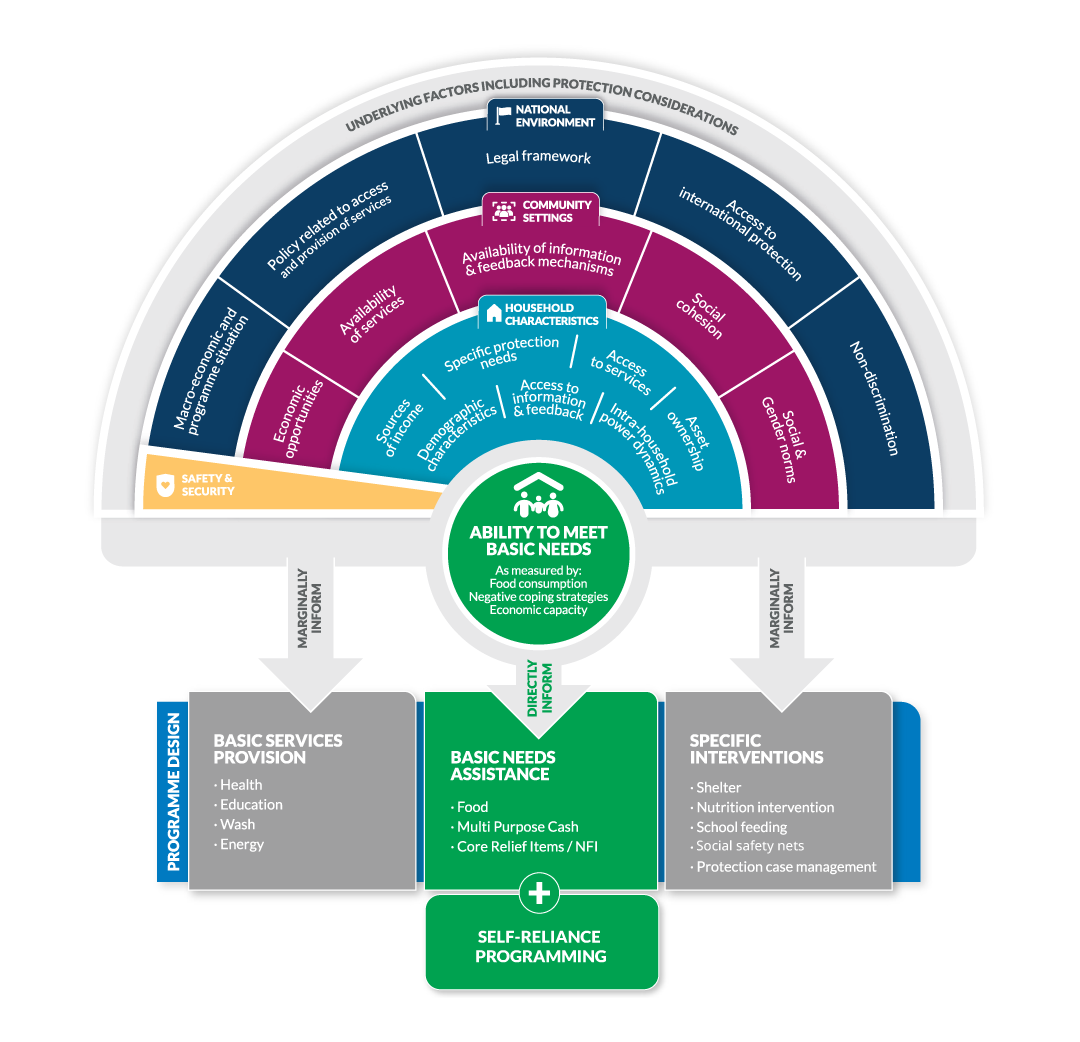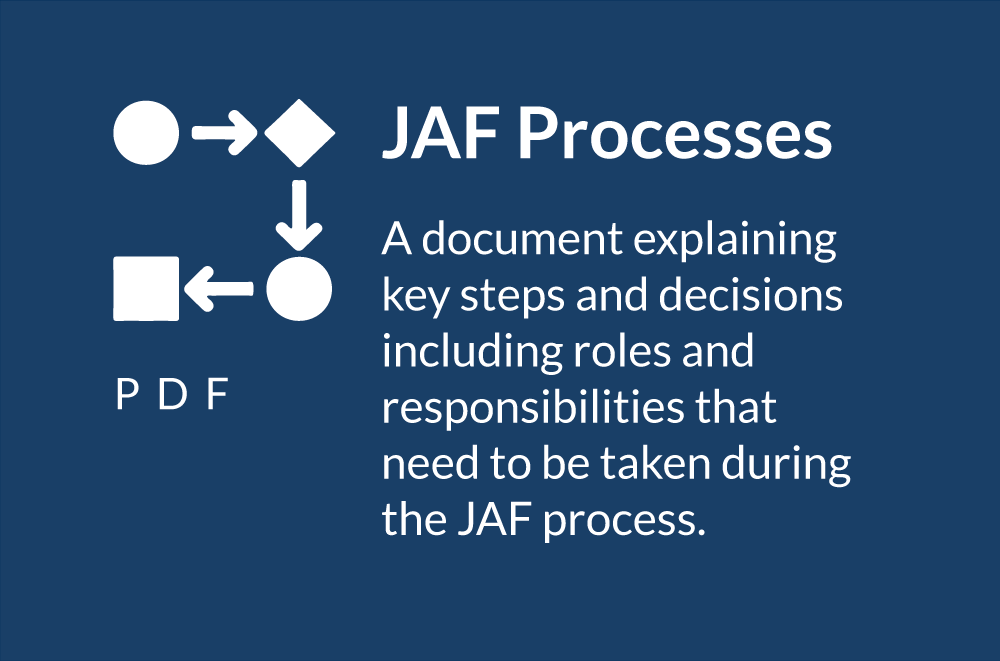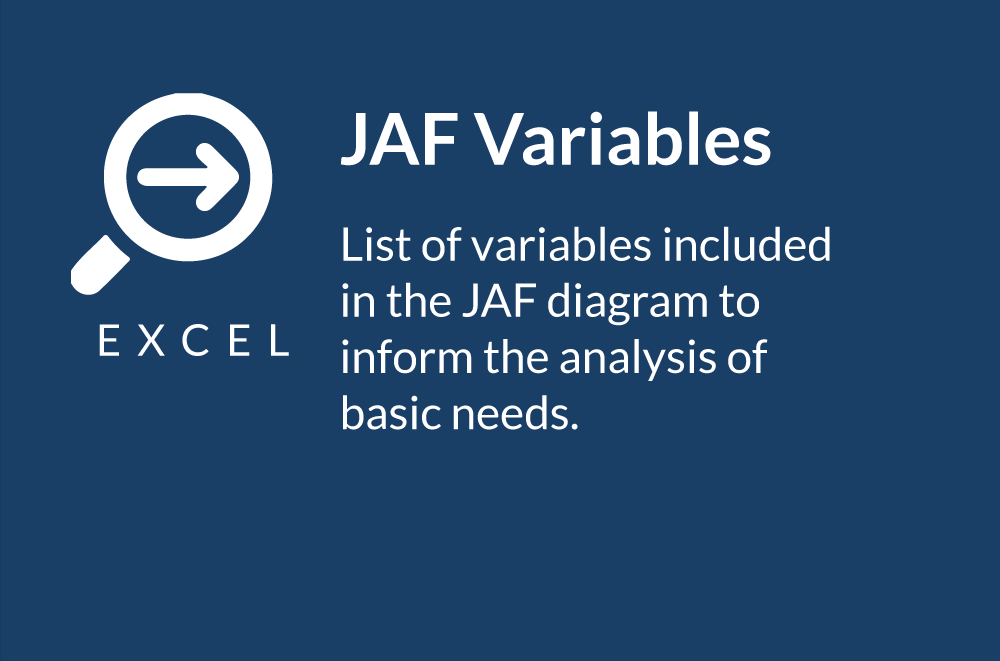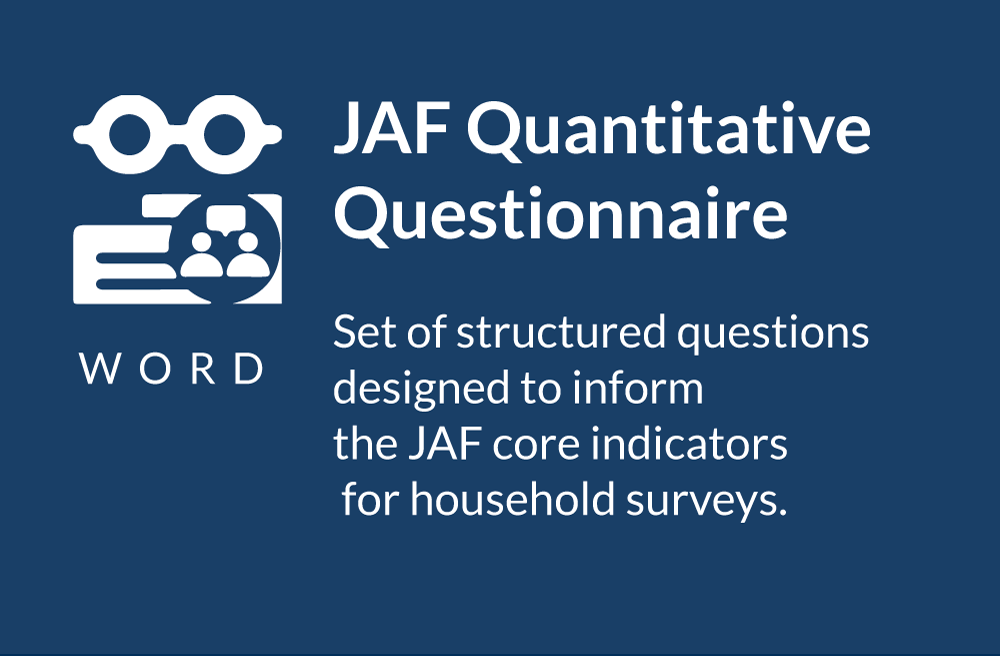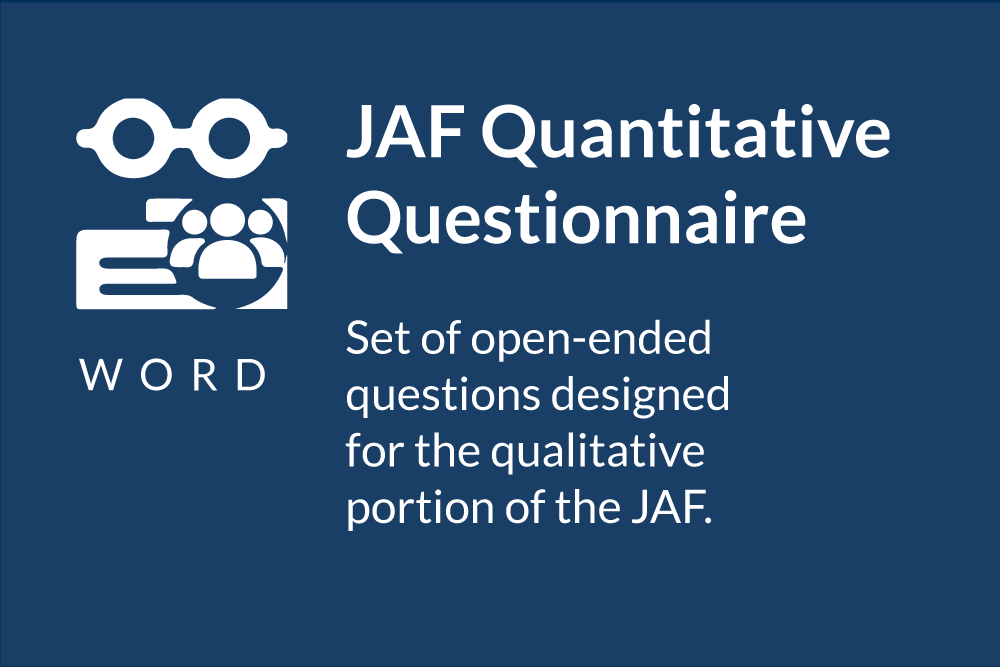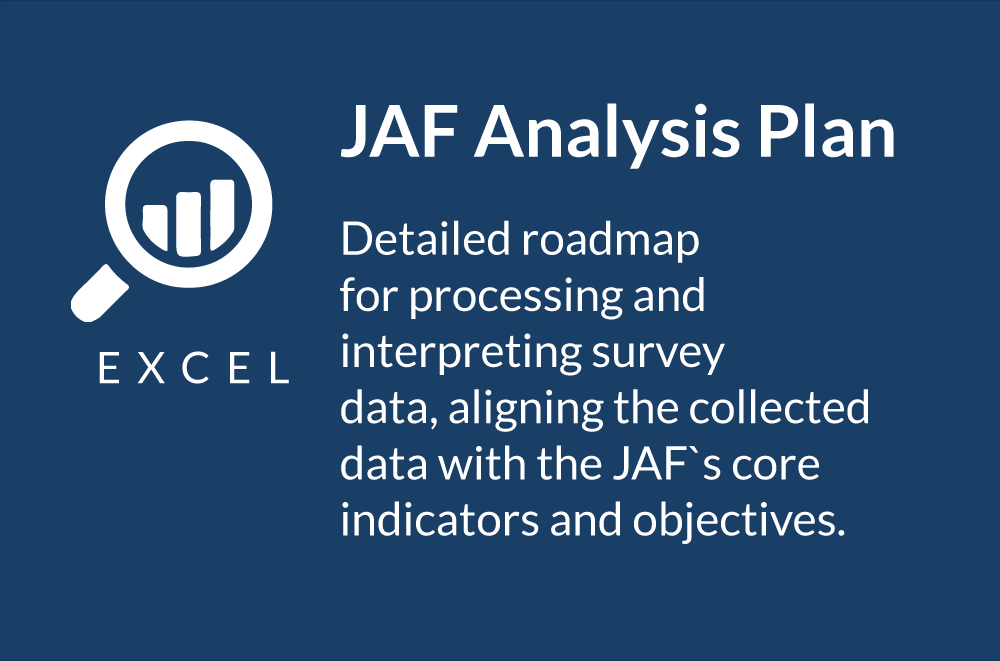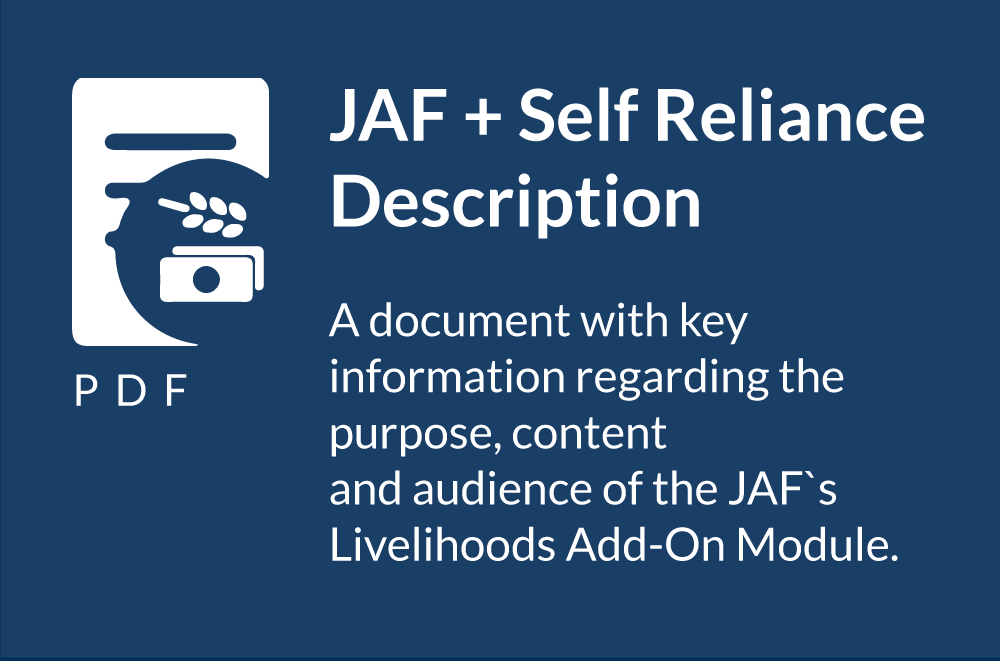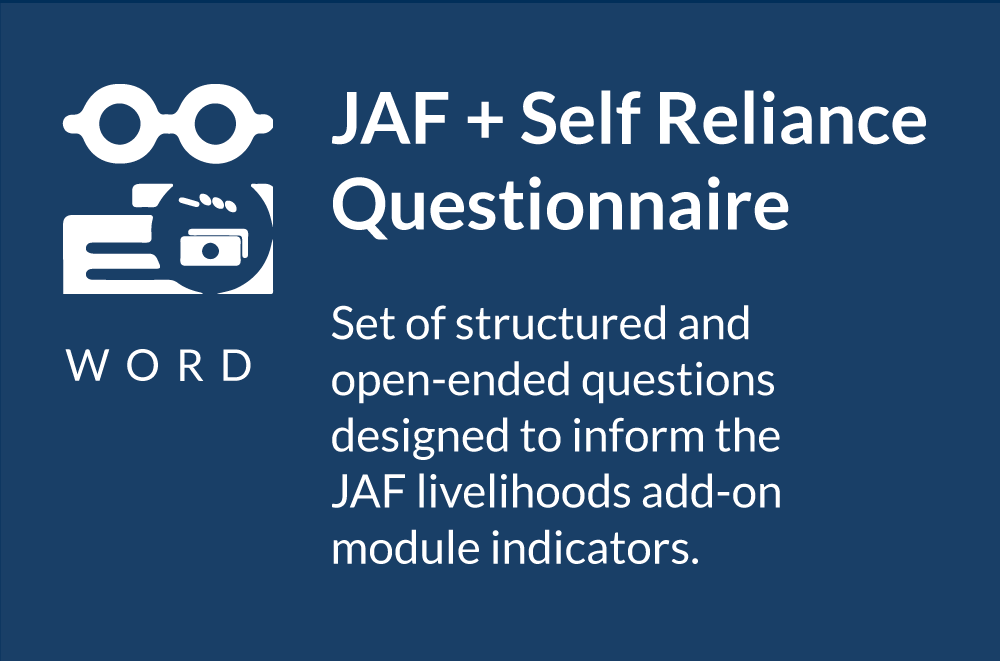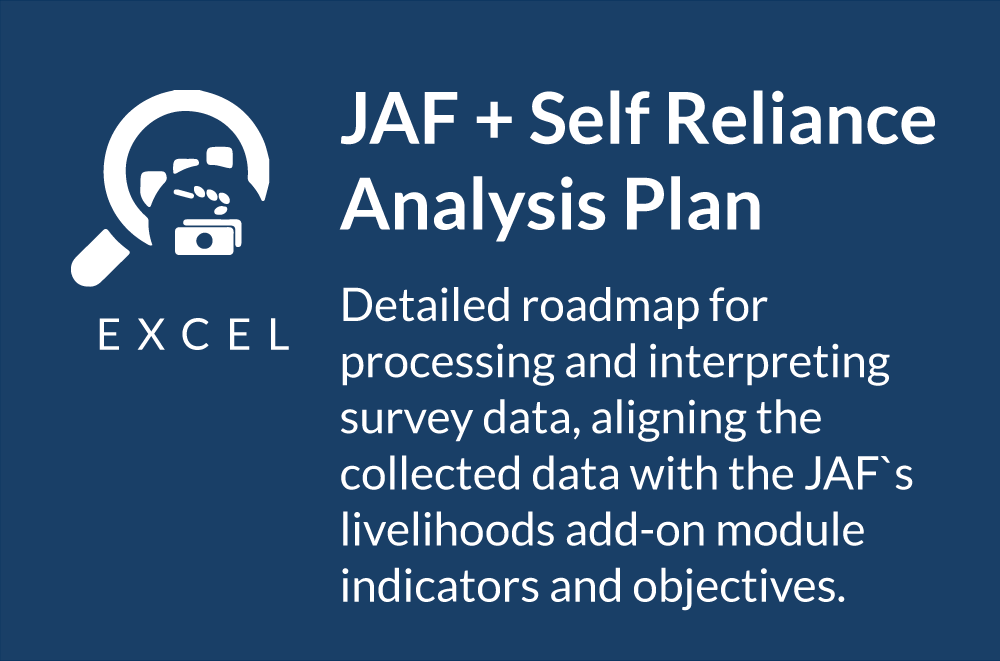UNHCR-WFP Joint Analytical Framework (JAF)
To better understand the ability of refugees and other forcibly displaced people to meet their basic needs.
About the JAF
The Joint Analytical Framework (JAF) is a set of tools to guide UNHCR and WFP country operations to reach a common understanding of the ability of refugees, asylum seekers, and other forcibly displaced people to meet their basic needs.
The core JAF basic needs module primarily guides joint assessments and analysis to inform programmatic interventions —such as food, non-food, and multipurpose cash assistance—aimed at meeting the basic needs of affected populations.
Additionally, the JAF offers an optional self-reliance module that builds on the core basic needs module to capture additional insights that can inform programmatic activities designed to enhance the self-reliance and economic inclusion of forcibly displaced populations.
The JAF builds on existing UNHCR and WFP corporate methodologies (for example WFP’s Essential Needs Analysis and UNHCRs corporate indicators) and experience to date with the aim of complementing and operationalising current joint guidance.
JAF Toolkit
JAF GUIDLINES
JAF TEMPLATES
JAF+SELF-RELIANCE MODULE
Frequently Asked Questions (FAQs)
Who is the JAF for?
The JAF should be used collaboratively by UNHCR and WFP in contexts where both agencies are jointly involved in providing basic needs assistance to refugees and other forcibly displaced people, or when UNHCR and WFP want to design joint livelihoods interventions to support economic inclusion and need a common framework of indicators.
The JAF is designed to be used by joint UNHCR and WFP multifunctional teams with technical expertise on assessments, programme design (including cash-based), protection and accountability to affected people, in consultation with field teams.
Additionally, UNHCR and WFP may independently employ the JAF to facilitate analysis related to the ability of forcibly displaced people to meet their basic needs and to inform livelihoods and self-reliance programming, in contexts where only one of the agencies is operational. For example, as per the UNHCR programme manual, in contexts where WFP is not operationally present, UNHCR operations can use the JAF to inform their situational analysis and response planning.
The JAF may also be useful as an analytical tool for partner organizations supporting basic needs programming in situations of forced displacement.
When should the JAF be used?
The JAF can be used in the following contexts:
- Strategic planning: When UNHCR and WFP are delivering basic assis
tance jointly, or when both agencies are planning programming to support livelihoods, the JAF can feed into the development of strategic plans (such as WFP Country Strategic Plans and UNHCR Multi-Year Strategic Plans), in alignment with wider planning processes such as Refugee Response Plans, and the UNSCDF. - Joint Assessment: The JAF is a framework for analysis that should be used in all joint assessments such as JAM (Joint Assessment Missions), FSNA (Food Security and Nutrition Assessment), JNA (Joint Needs Assessment), etc.
- Programmatic Changes: For both agencies, the JAF can be used when assessments and analysis are conducted in response to significant changes in the context, which require a new response or considerable adjustments to existing pro gramming.
- Monitoring: JAF can be used to inform the collection and analysis of joint monitoring data, such as (Joint) Post Distribution Monitoring (PDM).
What are the components of the framework?
The framework has been designed recognising that a household’s ability to meet basic needs is influenced by factors across different levels. The framework considers national, community and household characteristics as core determinants to meeting basic needs. Therefore, the core components are:
- Measuring the ability to meet basic needs: By considering relevant factors that contribute to vulnerability to meet essential needs, aid providers can ensure that assistance is provided to those who are most in need and who may have difficulty fulfilling their basic needs without additional support. A combined measurement of food consumption (Food Consumption Score – FCS), economic capacity (Economic Capacity to Meet Essential Needs ECMEN), and negative coping strategies (Livelihood Coping Strategies Index for Essential Needs – LCS-EN) provides a comprehensive assessment of a household’s ability to meet their basic need.
- Analysing the national environment: National level analysis comprises the macro economic situation of the refugee and other forcibly displaced people in hosting country, the legal framework and protection environment, as well as policies on access to services. This information can provide an understanding of the displacement context and the impact the national environment has on households’ vulnerability and self-reliance.
- The community setting: Community level analysis focuses on the geographic area where refugees and other forcibly displaced people are located. This includes economic opportunities, availability and acceptability of services, access to information and feedback and response mechanisms, social cohesion, and social and gender norms.
- Household characteristics: Household level analysis focuses on characteristics that enable or hinder the household’s capacity to cover basic needs and become self reliant. This includes demographic composition, source of income, asset ownership, specific protection needs,8 access to services and information and power dynamics within the household.

